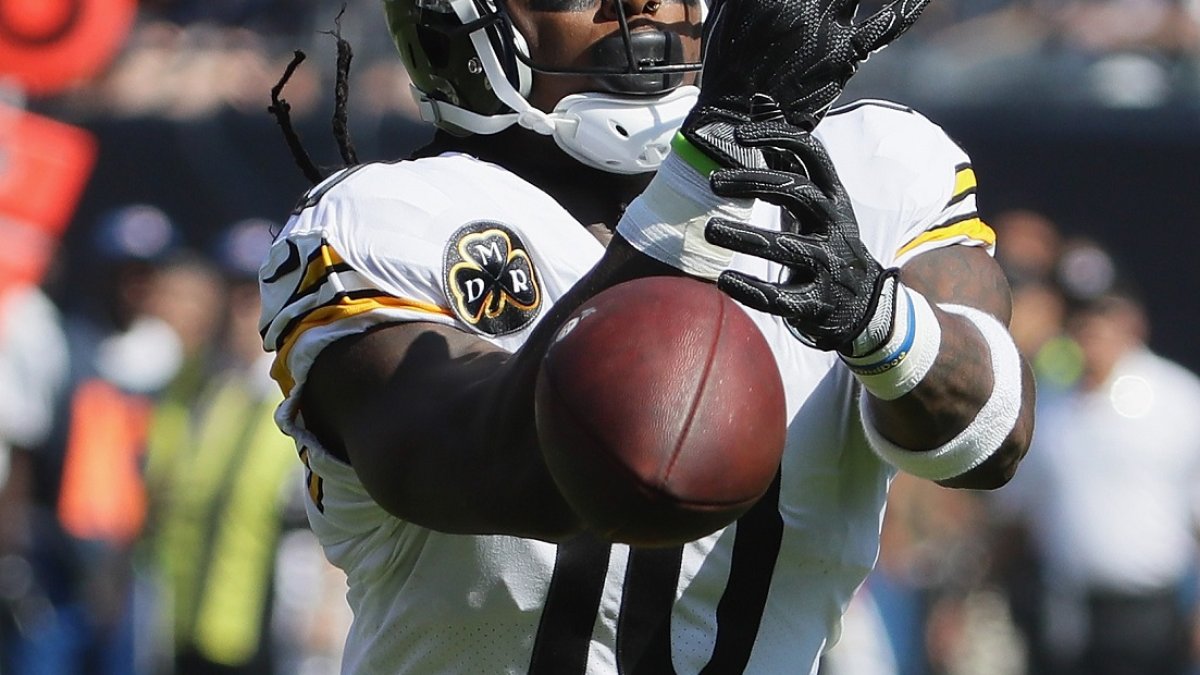The preseason buzz surrounding the Pittsburgh Steelers offense was off the charts. Ben Roethlisberger, Le’Veon Bell, Antonio Brown, Martavis Bryant, and one of the best offensive lines in the league. How do you even game plan to stop them?
After three weeks of the regular season though, the buzz has been flipped on its head. The Steelers offense is 16th in yards per drive and 17th in points per drive. The question of “how do you even game plan to stop them?” was answered by the Chicago Bears of all teams, who held them to 17 points this past week. Let’s take a look at exactly what that game plan was, and if the blue print is really out on the Steelers offense.
It always helps a defense’s stats when on the very first play of the game a busted coverage that should have gone for a 75-yard touchdown is dropped, but don’t let that take away from the overall defensive performance. After that play, the Bears did what they’ve always done under Vic Fangio and that is throw the kitchen sink at opposing offenses. They run one of the most varied coverage schemes in the NFL and last Sunday was no exception. Below is a breakdown of what coverages they ran against Pittsburgh.
| Coverage | Snaps |
| 1 | 5 |
| 2 | 9 |
| 2-Man | 3 |
| 3 | 11 |
| 4 | 5 |
| 6 | 6 |
| Red Zone Specific | 7 |
They almost exclusively show split safeties at the snaps, with only eight of Roethlisberger’s 46 dropbacks coming with a single high look. On 15 snaps though they gave a different pre-snap look than what they ran post-snap, and on those Roethlisberger’s stats were the following:
| Completions | 8 |
| Attempts | 13 |
| Yards | 67 |
| YPA | 5.2 |
| TD | 0 |
| INT | 0 |
| 1st Downs | 3 |
| Sacks | 3 |
The Bears’ ability to effectively disguise coverage proved to be one of the differences in the game. On paper, the Bears secondary shouldn’t have stood a chance against Brown and Bryant. By keeping Roethlisberger off balance though, they did just enough to shut down the Steelers passing offense when it counted.
From a running game perspective, the Bears didn’t actually do anything special gameplan-wise. Contrary to what one might expect, the Bears weren’t overloading the box to stop Bell. In fact, of the Steelers 18 run plays, only three came with the Bears having more defenders in the box than the Steelers could block. Those other 15 plays averaged 5.0 yards per carry, but two were called back due to penalties. The Bears were content to let Bell get his yards on the ground — they were going to stop the pass.
At the end of the day though, a lot of what has stopped the Steelers passing game this season has been the Steelers themselves. More specifically, quarterback Roethlisberger. This is a downfield passing offense. This is an offense uniquely qualified to generate big plays. The thing about an offense like that though is that there are only so many chances at big plays in a game. You can’t run vertical concepts every single play, but the times you do, you better hit one. So far Roethlisberger has been hitting them at the lowest rate of his career. We track a number of odd stats at PFF, but two of the most telling for Roethlisberger are Big-Time Throws (BTTs) and Turnover-Worthy Throws (TWTs). BTTs are well-placed downfield passes regardless of whether they are caught (the Bryant drop on the first play of the game would qualify as one). Turnover-worthy throws are passes put in harm’s way regardless of whether they were intercepted. The ratio of BTTs over TWTs has been dubbed the game-changer index by my colleague Steve Palazzolo and is a good indication of a quarterback’s downfield prowess. Here is Roethlisberger over the last four seasons:
| Year | Game Changer Index |
| 2014 | 2.1 |
| 2015 | 2.3 |
| 2016 | 1.2 |
| 2017 | 0.7 |
That is a concerning trend. Many, including myself, explained away the dip in 2016 with the loss of Bryant and thought we’d see a return to 2015 levels this year. Instead, the downward trend has continued. With two weapons the caliber of Brown and Bryant, there’s no excuse. If Roethlisberger can’t consistently make plays down the field, the offense will continue to stall.



 © 2025 PFF - all rights reserved.
© 2025 PFF - all rights reserved.